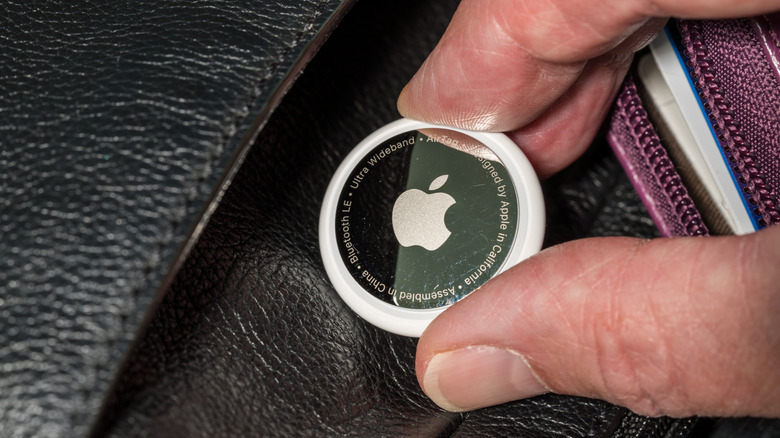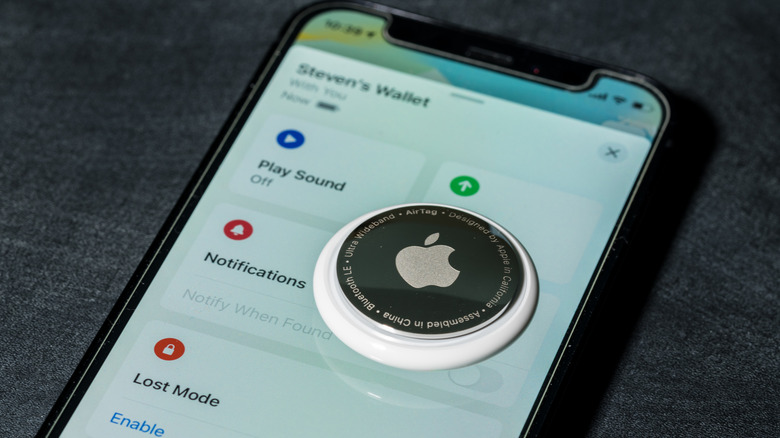Here's What You Should Know About The TSA's AirTag Rules Before Throwing One In Your Luggage
So, you're thinking about slipping an AirTag into your suitcase. Smart move. Who hasn't experienced heart-pounding panic when their bag doesn't show up on the carousel? Apple's tiny tracking device can give you instant peace of mind by showing your bag's location, even when the airline staff can't.
That leads to the obvious question: what are TSA's rules for AirTags? You can breathe easy. It does allow these tracking devices in both carry-on and checked luggage, but keep in mind they do have strict rules for lithium-metal (non-rechargeable) batteries like the little CR2032 coin-cell one inside AirTags. These batteries have to follow two rules. First, they must always remain installed in a device. Loose lithium batteries are not allowed in checked bags, you can only bring them in your carry-on, and they must be protected against short-circuiting (for example, keeping them in the original packaging, a battery case, or taping over the terminals). These batteries aren't just used in AirTags, also in cameras and watches, so make sure to keep them inside their respective device. Second, these batteries must contain less than 2 grams of lithium, which is way below what the AirTag battery weighs.
Stick the tracking device somewhere TSA can access, like an outer or easy inside zip pocket. It helps during scans and ensures the signal isn't totally blocked. Still, always have a physical luggage tag attached for safety reasons, containing your name, address, and phone number.
How do AirTags work?
Contrary to popular belief, AirTags don't have GPS. Instead, they emit a low-energy Bluetooth signal. Whenever an iPhone (or another Apple device with "Find My" enabled) passes near your AirTag, it securely and anonymously relays the location to Apple's servers. You then see that location in your Find My app. This works worldwide because there are over 1.5 billion active iPhones. Even if you're not nearby, chances are someone else's iPhone is — and your AirTag will piggyback on their signal. The owner never sees who's nearby, and the passerby doesn't know they helped locate your AirTag.
You'll thank yourself at baggage claim for the time it saves, but it will be especially life-saving if your luggage gets lost. This is how the magic happens: First, tap "Play Sound" on the app. If your AirTag is under 30 or so feet away from you, it will chirp loudly. You'll also see "Precision Finding" (an arrow and distance reading like "10 ft → This way"). However, if your AirTag is far away (like still in another airport), you'll see its location update when another Apple device passes by it. Sometimes you'll see it instantly, sometimes it takes a little patience.
That said, we also suggest slipping one in your carry-on, just in case the overhead bins are full on your flight and the staff need to check it. As of this writing, you can buy AirTags starting at $29 on the Apple website.

